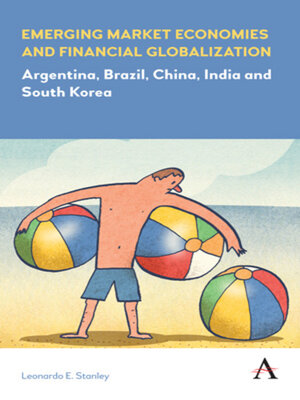Emerging Market Economies and Financial Globalization
ebook ∣ Argentina, Brazil, China, India and South Korea · Anthem Frontiers of Global Political Economy and Development
By Leonardo E. Stanley

Sign up to save your library
With an OverDrive account, you can save your favorite libraries for at-a-glance information about availability. Find out more about OverDrive accounts.
Find this title in Libby, the library reading app by OverDrive.



Search for a digital library with this title
Title found at these libraries:
| Library Name | Distance |
|---|---|
| Loading... |
In the past, foreign shocks arrived to national economies mainly through trade channels, and transmissions of such shocks took time to come into effect. However, after capital globalization, shocks spread to markets almost immediately. Despite the increasing macroeconomic dangers that the situation generated at emerging markets in the South, nobody at the North was ready to acknowledge the pro-cyclicality of the financial system and the inner weakness of "decontrolled" financial innovations because they were enjoying from the "great moderation." Monetary policy was primarily centered on price stability objectives, without considering the mounting credit and asset price booms being generated by market liquidity and the problems generated by this glut. Mainstream economists, in turn, were not majorly attracted in integrating financial factors in their models. External pressures on emerging market economies (EMEs) were not eliminated after 2008, but even increased as international capital flows augmented in relevance thereafter. Initially economic authorities accurately responded to the challenge, but unconventional monetary policies in the US began to create important spillovers in EMEs. Furthermore, in contrast to a previous surge in liquidity, funds were now transmitted to EMEs throughout the bond market. The perspective of an increase in US interest rates by the FED is generating a reversal of expectations and a sudden flight to quality. Emerging countries' currencies began to experience higher volatility levels, and depreciation movements against a newly strong US dollar are also increasingly observed. Consequently, there are increasing doubts that the "unexpected" favorable outcome observed in most EMEs at the aftermath of the Global Financial Crisis (GFC) would remain.
|"Emerging Market Economies and Financial Globalization" offers a comparative analysis of the capital account liberalization process and the variety of policy responses generated among a reduced group of Latin American and Asian countries. In particular, the book critically examines these varied responses from a three-fold perspective: macro, micro-financial and institutional. From a macro perspective, the book compares exchange rate regimes, monetary policies and capital account liberalization paths adopted at each of the selected countries. In other words, the book analyzes how emerging economies confronted the challenge imposed by the monetary trilemma posed by Mundell. The book analyzes different corner solutions (for example, exchange rate pegging) and whether there is life inside the triangle. The Asian financial crises have certainly induced a debate on the benefits of foreign exchange reserve accumulation and the increasing policy space generated since then. But emerging countries policy-makers realized the perils of sailing in uncharted waters and, consequently, began to introduce a series of instruments to prevent sudden reversals in capital flows.
The micro-financial perspective, in turn, directs our attention to the financial sector structure, how the process of financial deepening transformed it in recent years and how local authorities responded to the increasing pressures generated by an increasingly globally connected banking sector. But cross-funding, local regulation and financial stability are certainly difficult to match, even at developed countries as the European crisis demonstrates. This triplet conforms the so-called financial trilemma introduced by Schoenmaker, and analyzed in the book—particularly observing how selected countries performed it.
Finally, the institutional perspective center on the legal treatment granted to the capital account openness...







